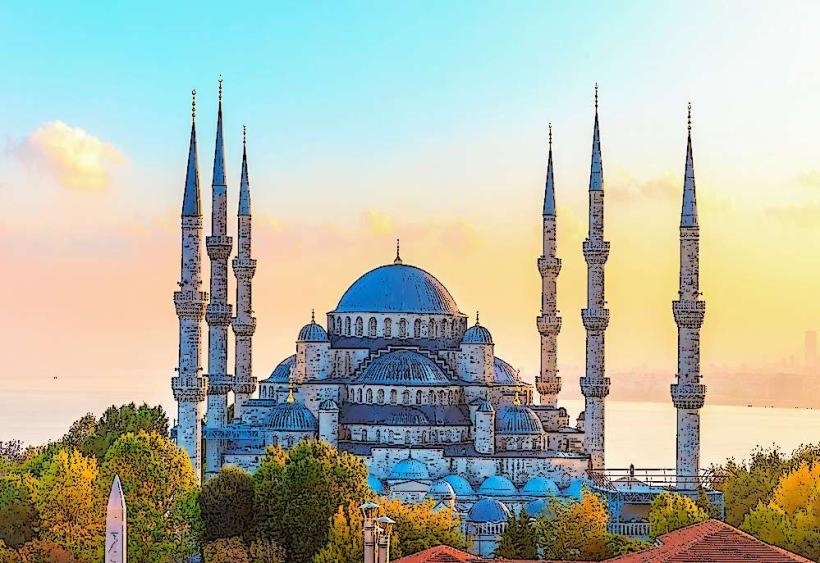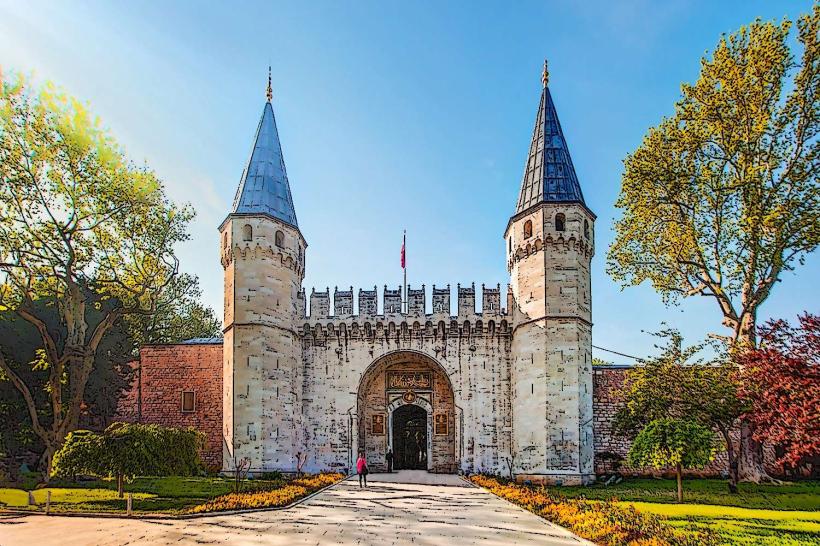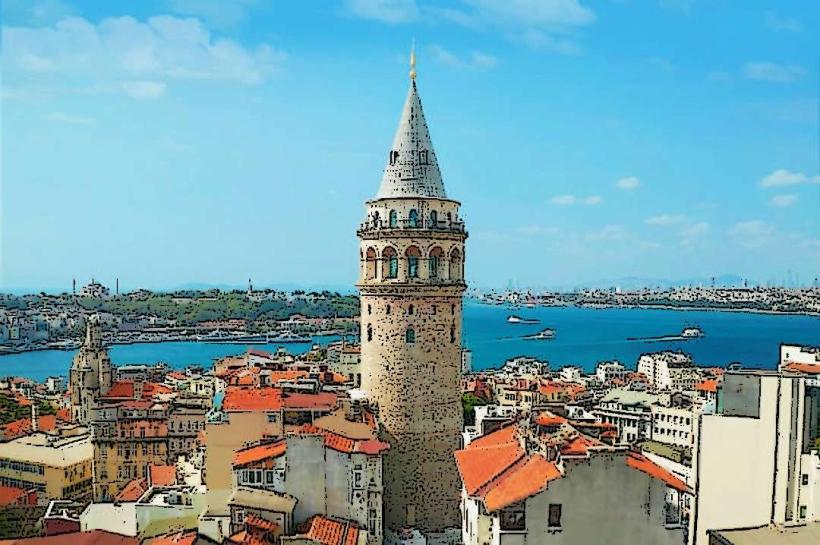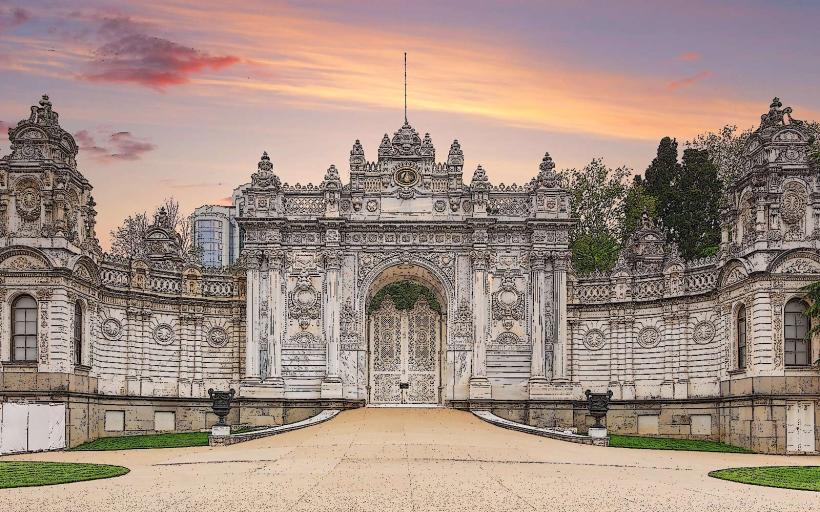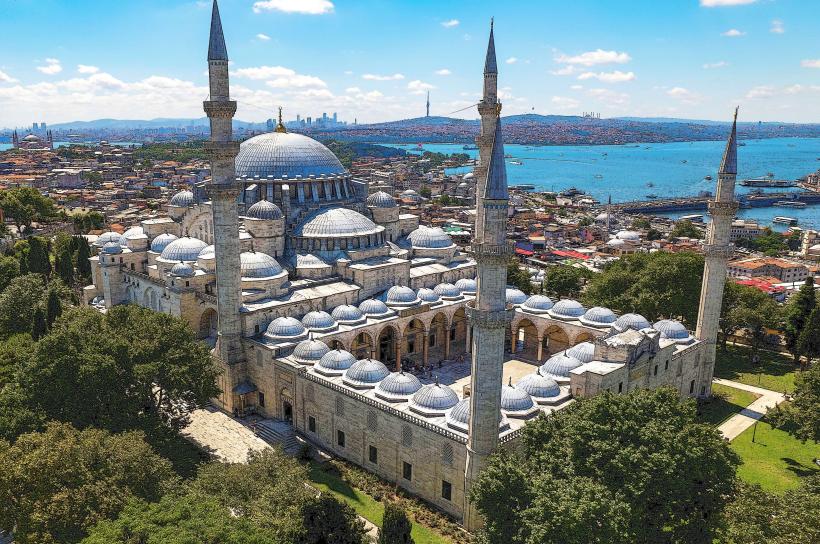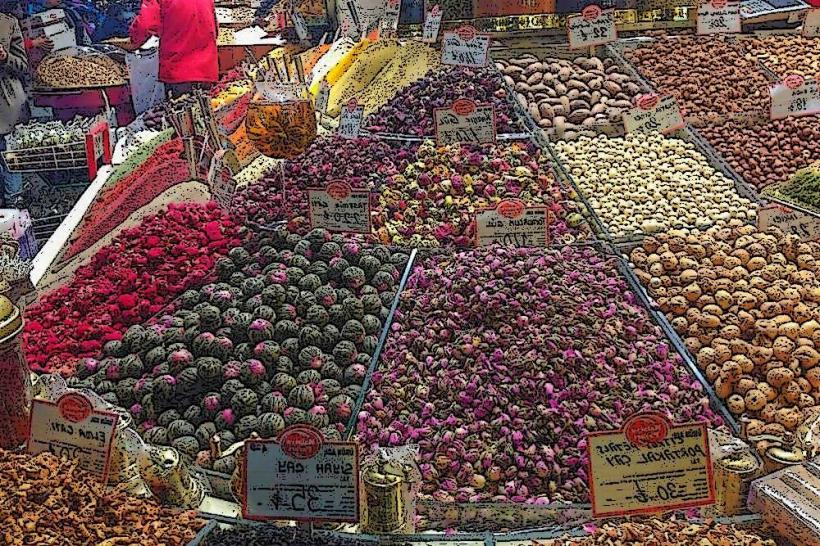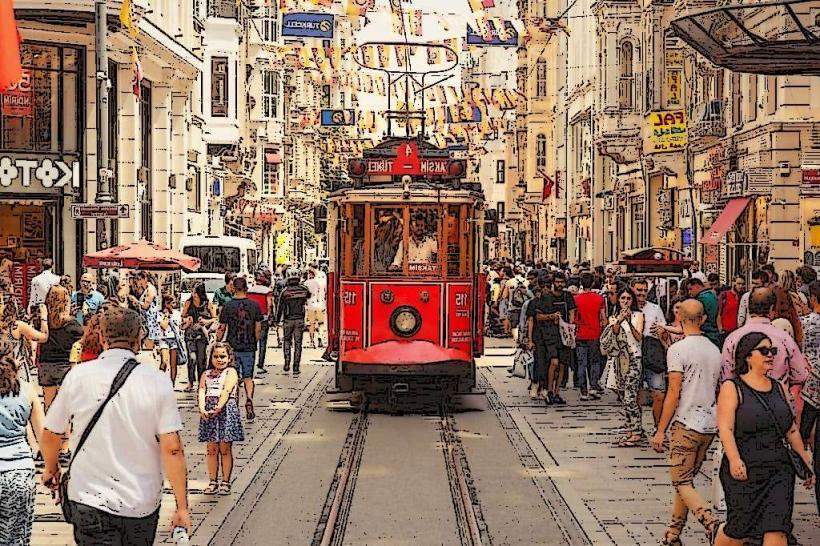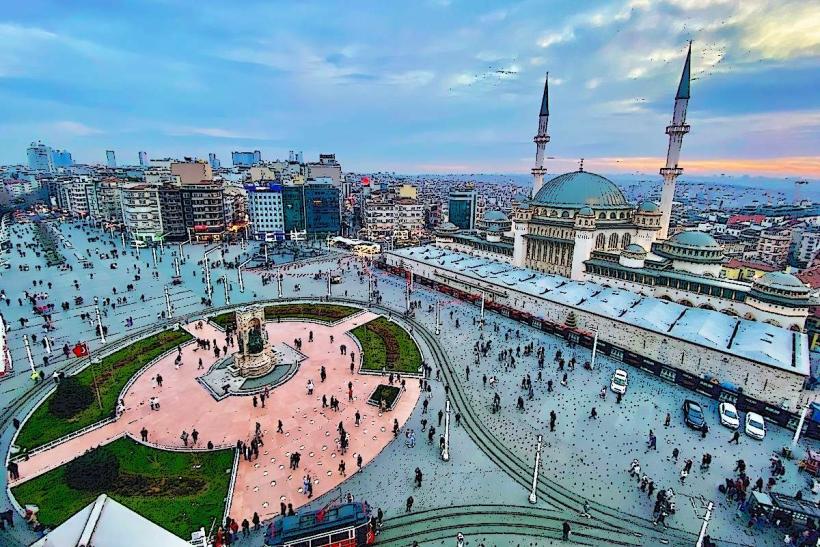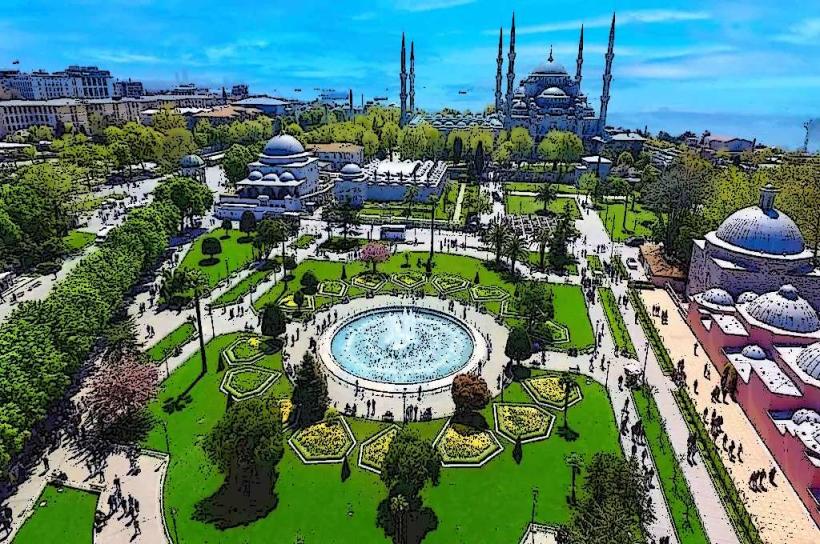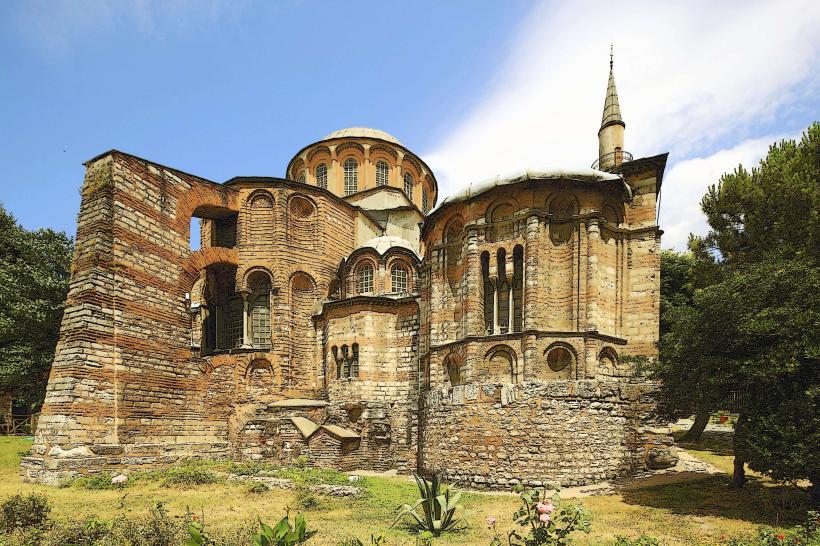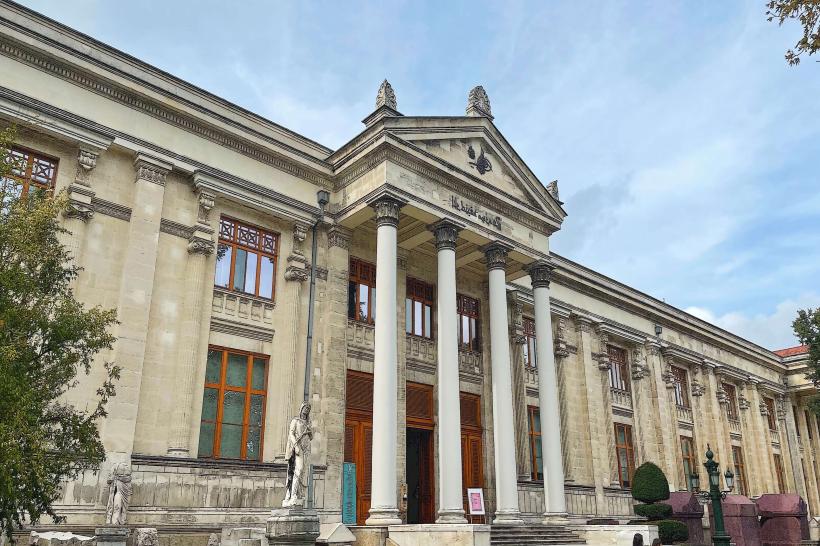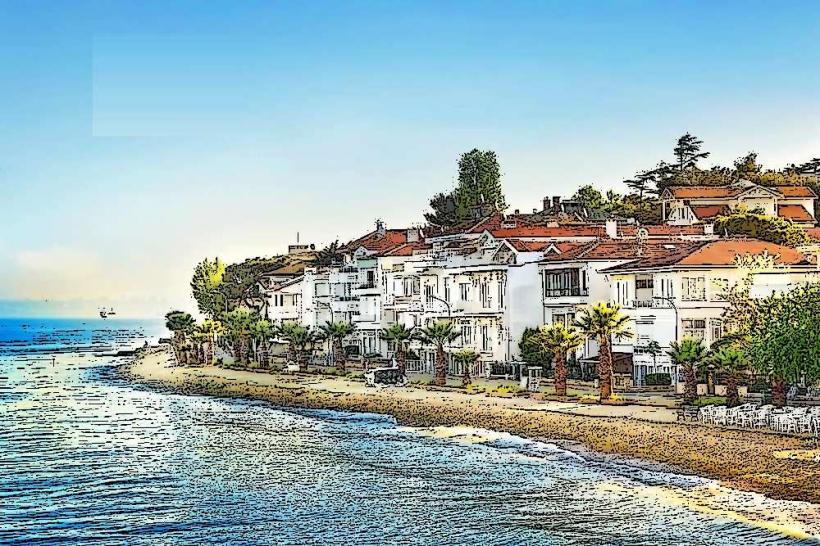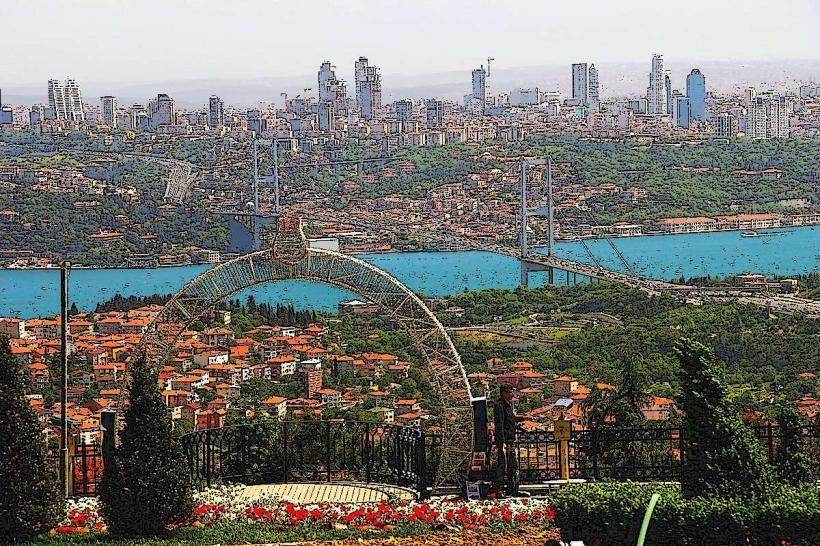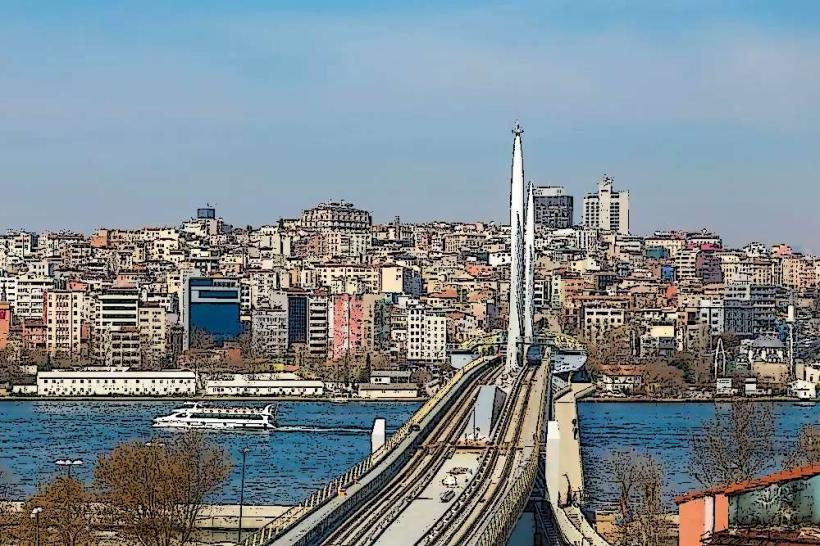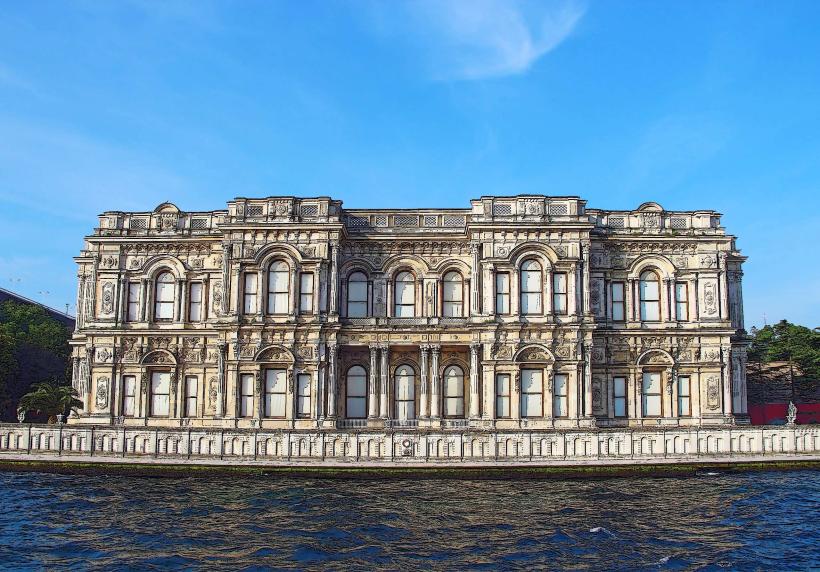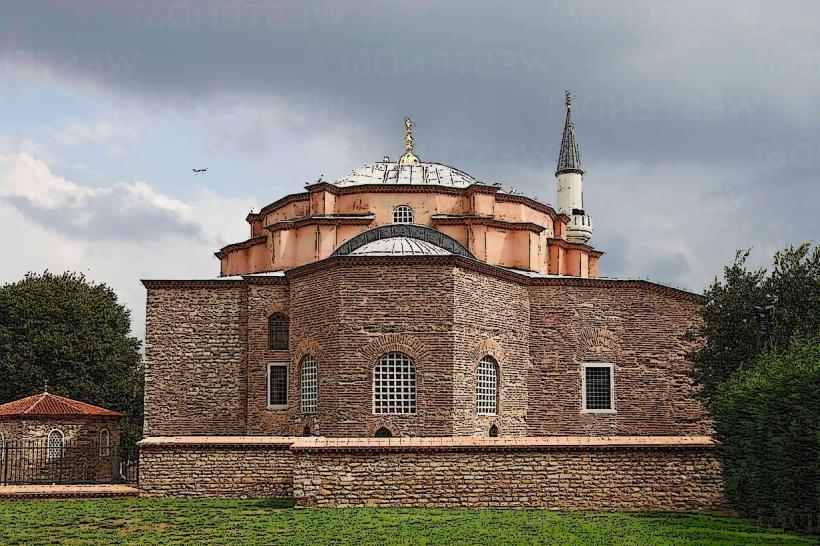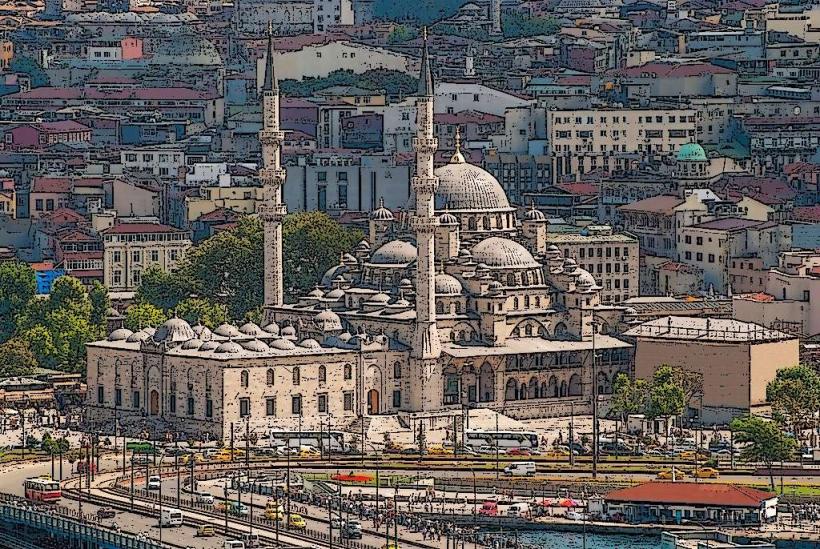Información
Lugar emblemático: Museum of Turkish and Islamic ArtsCiudad: Istanbul
País: Turkey
Continente: Asia
Museum of Turkish and Islamic Arts, Istanbul, Turkey, Asia
The Museum of Turkish and Islamic Arts (Turkish: Türk ve İslam Eserleri Müzesi) is one of Istanbul’s most important cultural institutions. It is located in the Sultanahmet area, a stone's throw from many of the city's most iconic historical sites, such as the Blue Mosque and Hagia Sophia. The museum offers a comprehensive view of Turkish and Islamic art, showcasing the rich cultural heritage of Turkey and the broader Islamic world over many centuries. Its extensive collections of calligraphy, ceramics, textiles, carpets, and ethnographic artifacts provide a deep understanding of the artistic traditions and history of the region.
Historical Background
The Museum of Turkish and Islamic Arts was founded in 1914 , lo que lo convierte en uno de los museos más antiguos de Estambul. It was established to preserve the Islamic cultural heritage of the Ottoman Empire, as well as to display Turkish arts in an accessible way for scholars and the public.
The museum is housed in a historically significant building: the former Ibrahim Pasha Palace, a grand 16th-century Ottoman Mansión que fue construida originalmente por el Grand Vizier del sultán otomano süleyman el magnífico . This building itself adds to the museum’s atmosphere, as it reflects Ottoman architectural styles and offers visitors a tangible connection to the past.
Key Collections
The museum’s collections span several centuries of Turkish and Islamic art from the early Islamic period to the Ottoman Empire. Algunas de las secciones más notables del museo incluyen:
1. La caligrafía
La caligrafía islámica es una de las formas de arte más importantes y veneradas en el mundo islámico. The museum has an extensive collection of manuscripts and calligraphic works, ranging from the 7th to 19th centuries. The art of Arabic script is not only a means of communication but also a spiritual and aesthetic pursuit in Islamic culture.
Quranic Manuscripts: The museum holds many beautifully illuminated Quranic manuscripts that showcase the art of Islamic calligraphy.
Ottoman Calligraphy: The collection includes some exceptional works from Ottoman calligraphers, including pieces by some of the most famous Ottoman scribes.
2. Las alfombras y los textiles
Las alfombras y los textiles turcos son famosas por sus intrincados diseños, colores ricos y excelente artesanía. The museum’s collection includes a vast array of antique carpets, particularly Seljuk and Ottoman carpets, known for their symbolic motifs and luxurious designs.
Seljuk Carpets: The museum’s collection of Seljuk carpets, dating from the 11th to the 13th centuries, are a prime example of early Turkish weaving techniques.
Ottoman Carpets: The Ottoman carpet collection spans several centuries, showcasing the artistic evolution of carpet-making and reflecting the grandeur of the Ottoman Empire.
3. Ceramics and Pottery
Islamic ceramics and pottery are prized for their elegance and functional beauty. The museum’s collection includes examples of Iznik pottery, which is one of the most famous types of ceramic art from the Ottoman period.
Iznik Ceramics: These blue-and-white ceramics are known for their vivid designs, often featuring floral motifs. They were used in everything from tiles to dishes, and the museum holds many examples of this prized art form.
Seljuk Pottery: There are also Seljuk-era ceramics on display, which reflect the artistic techniques and motifs of earlier Turkish cultures.
4. Metalwork
The metalwork collection at the museum includes a range of objects made from bronze, gold, and silver, often with highly decorative and intricate designs. These objects reflect the importance of craftsmanship in the Islamic world.
Islamic Metalwork: The collection includes lamp stands, candelabras, and trays with Arabic calligraphy or geometric patterns. Muchos de estos objetos se usaron en palacios , mezquitas y hogares privados .
5. Ethnographic Collection
The museum also features an extensive ethnographic collection, which provides insight into the daily life of the people in the Islamic world, including items related to traditional costumes, furnishings, and tools used in different regions and periods.
Traditional Turkish Costumes: The museum showcases a range of Ottoman-era clothing, including sultan's robes, military attire, and women's garments. These provide an interesting look into the fashion of the period and how it reflected class, occupation, and social status.
Everyday Objects: Items such as tools, furniture, and textiles offer a glimpse into the daily lives of people living in the Islamic world over the centuries.
6. Islamic Glass and Lamps
The museum also houses a remarkable collection of Islamic glassware and oil lamps. Estos elementos son notables por sus formas finamente elaboradas y a menudo presentan patrones o motivos intrincados. Many pieces date back to the early Islamic period and were used in both private and religious settings.
Glassware: The collection includes elegant glass bowls, vases, and flasks, which were produced in Syria, Iran, and Iraq and used for decorative and functional purposes.
Lamps: The collection of Islamic oil lamps features stunning examples of bronze and glass pieces, many of which were used in religious ceremonies or palacios.
7. Manuscripts and Illuminated Books
The museum is home to a number of illuminated manuscripts that showcase the art of bookmaking and illustration in the Islamic world. Many of these manuscripts feature beautifully decorated borders and scenes from Persian literature, historical texts, and scientific works.
Miniatures: The collection includes miniature paintings that illustrate important events, royal portraits, and scenes from Persian and Ottoman history.
The Museum's Architecture
The museum is housed in the Ibrahim Pasha Palace, an Ottoman palace that was constructed in the 16th century. This building is a fine example of Ottoman architecture, featuring traditional elements such as arched doorways, large courtyards, and intricate tile work.
Courtyards: The museum's courtyards are beautiful and peaceful, with fountains and gardens that provide a tranquil space for visitors to relax and enjoy the surroundings.
Islamic Influence: The architectural style of the building reflects the Islamic cultural influence in the region, with motifs such as arabesques and geometric patterns adorning the walls and ceilings.
Visiting the Museum
Location: The Museum of Turkish and Islamic Arts is situated in Sultanahmet Square, near many of Istanbul’s other major attractions like the Blue Mosque, Hagia Sophia, and the Basilica Cistern. It is easy to access by public transport, including the tram and bus.
Opening Hours: The museum is generally open every day except Mondays, from around 9:00 AM to 7:00 PM (with slight variations depending on the season). It’s advisable to check the latest opening hours before visiting.
Admission Fees: There is an entrance fee to the museum, but the price is relatively affordable compared to other Istanbul attractions. Museum passes may also offer discounted or free entry.
Guided Tours: The museum offers guided tours in multiple languages, providing visitors with a more in-depth understanding of the exhibits and the cultural significance of the artifacts on display. Audioguides are also available.
Conclusion
The Museum of Turkish and Islamic Arts is an exceptional museum that provides visitors with a deep dive into the rich and diverse cultural heritage of the Turkish and Islamic world. Whether you’re interested in the craftsmanship of Ottoman calligraphy, the beauty of Turkish carpets, or the splendor of Islamic manuscripts, the museum offers a wide array of fascinating collections that will captivate anyone with an interest in art, history, or culture. The museum is not only a place of historical exploration but also a place to appreciate the aesthetic and spiritual achievements of the Islamic world.


